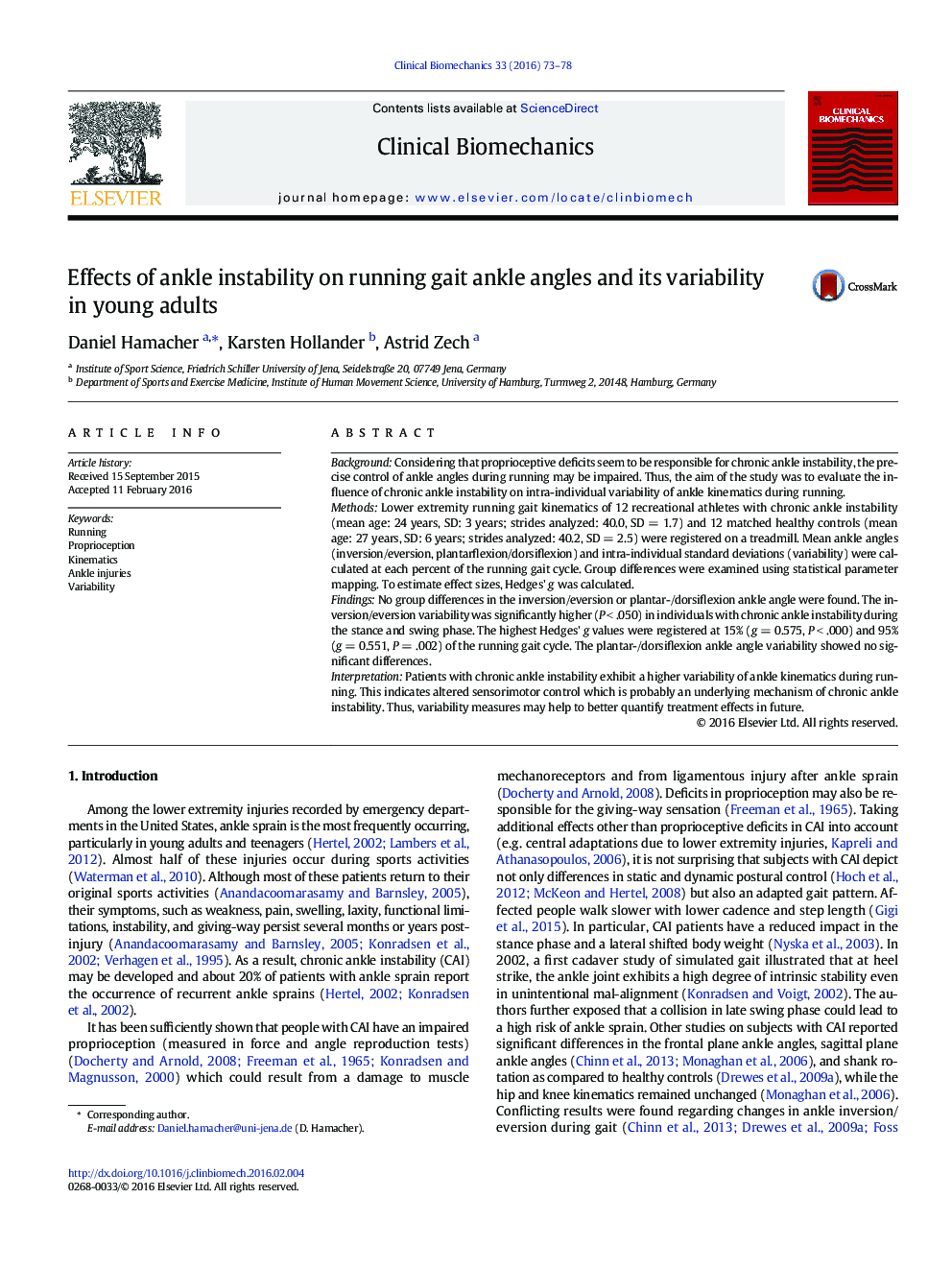| کد مقاله | کد نشریه | سال انتشار | مقاله انگلیسی | نسخه تمام متن |
|---|---|---|---|---|
| 4050135 | 1603745 | 2016 | 6 صفحه PDF | دانلود رایگان |
• Effects of functional ankle instability on ankle angles in running were analyzed.
• In the functional ankle instability group, no altered mean ankle angles were found.
• Ankle angle variability was higher in the functional ankle instability group.
• Ankle variability in running may be associated with functional ankle instability.
• Running ankle angle variability is associated with functional ankle instability.
BackgroundConsidering that proprioceptive deficits seem to be responsible for chronic ankle instability, the precise control of ankle angles during running may be impaired. Thus, the aim of the study was to evaluate the influence of chronic ankle instability on intra-individual variability of ankle kinematics during running.MethodsLower extremity running gait kinematics of 12 recreational athletes with chronic ankle instability (mean age: 24 years, SD: 3 years; strides analyzed: 40.0, SD = 1.7) and 12 matched healthy controls (mean age: 27 years, SD: 6 years; strides analyzed: 40.2, SD = 2.5) were registered on a treadmill. Mean ankle angles (inversion/eversion, plantarflexion/dorsiflexion) and intra-individual standard deviations (variability) were calculated at each percent of the running gait cycle. Group differences were examined using statistical parameter mapping. To estimate effect sizes, Hedges' g was calculated.FindingsNo group differences in the inversion/eversion or plantar-/dorsiflexion ankle angle were found. The inversion/eversion variability was significantly higher (P < .050) in individuals with chronic ankle instability during the stance and swing phase. The highest Hedges' g values were registered at 15% (g = 0.575, P < .000) and 95% (g = 0.551, P = .002) of the running gait cycle. The plantar-/dorsiflexion ankle angle variability showed no significant differences.InterpretationPatients with chronic ankle instability exhibit a higher variability of ankle kinematics during running. This indicates altered sensorimotor control which is probably an underlying mechanism of chronic ankle instability. Thus, variability measures may help to better quantify treatment effects in future.
Journal: Clinical Biomechanics - Volume 33, March 2016, Pages 73–78
